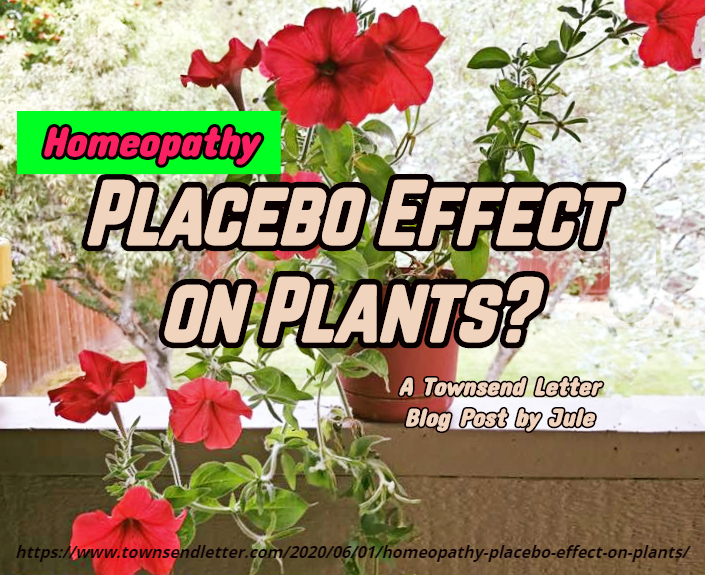Of all the various modalities used in complementary and alternative health care, homeopathy stands out as arguably the most controversial.
Even at its beginning when German physician Samuel Hahnemann in the early 1800’s found that preparations containing very dilute solutions of a natural substance could urge the body toward homeostasis, colleagues and other physicians disparaged the idea. But Hahnemann’s patients consistently showed improvement, and homeopathy continues to be widely used today.
Homeopathy is based on the idea that ‘like cures like’; a substance that causes a set of symptoms in a healthy person will relieve the same symptoms exhibited by a person who is ill. Disparagers maintain that its effect, if any, is a placebo. They call it “pseudoscience” and say that the highly diluted solutions could not possibly have an effect. That it doesn’t make sense.
The nay-sayers are clearly not familiar with the new field of nanomedicine. Today’s technological advances are allowing researchers to observe particles less than 10 nanometers in size, and these nanoparticles can produce biological effects, giving rise to the new field of nanopathology. In a 9/28/2017 webinar, presented at George Washington University School of Medicine,1 Iris Bell, MD, PhD, said researchers have found that homeopathic dilutions (beyond Avogadro’s number) of gold (Aurum metallicum), copper (Cuprum metallicum), and the plant Gelsemium contain nanoparticles of the original materials. It appears that electromagnetic signals from these homeopathic nanoparticles cause water to form nanostructures unique to the original source.
The present hypothesis for how homeopathy works, said Dr. Bell, is that “resonance between the electromagnetic wave properties of a well-chosen remedy and the physiological disease process in the patient…activates endogenous self-regulatory or modulatory adaptive mechanisms” that are part of the body’s healing response. The concept of resonance is key to homeopathy, which is based upon the idea of “like cures like.” The remedy that mirrors the symptoms of illness will help the body clear the same. A “well-chosen” remedy is the one that matches an individual’s symptoms most closely.
Years ago, I consulted a nurse practitioner who was also a trained homeopath. I was facing air travel plans that required five sets of take-offs and landings. I have a life-long history of motion sickness and had rarely managed to survive a plane landing without vomiting. Dramamine made me sleepy but didn’t prevent nausea. Air travel was a wretched experience.
Homeopathy has several remedies for addressing motion sickness. The homeopath spent well over an hour asking me questions about my physical and emotional health and symptoms. She advised me to get a bottle of Tabacum 30C, take a dose the night before flying, and just before take-off. I could take another dose during the flight if I became queasy. The remedy worked for me. Once or twice during those five flights, I experienced nausea—which quickly resolved with another dose. But never came close to vomiting.

Now skeptics would just ignore this as being meaningless and anecdotal, but there are over 1137 clinical homeopathic trials in medical literature. In the 2017 webinar, Peter Fisher, MD, director of research at Royal London Hospital for Integrated Medicine, University College London Hospitals, and Queen’s Physician, said that there were 2289 homeopathic studies involving animals, plants, human tissue, bacteria and viruses, and fungi in medical literature (as of August 2017). Ninety percent of these showed at least one positive result. Of the 1137 clinical trials, 41% showed positive results, 54% were inconclusive, and 5% had negative results. In comparison, systematic reviews of conventional treatments had 44% positive, 49% inconclusive, 7% negative results. The higher the quality of a randomized controlled homeopathic trial, the stronger the positive effect.
I have found that people tend to believe the effects of any treatment (conventional or alternative) either because it makes “sense” to them or because they have had a direct experience. The whole idea of nanopathology, that minute nanoparticles have a physiological effect on living systems, introduces a new paradigm. It may be that homeopathy is the first example of nanomedicine.
What do you think?
References
- “The State of Research in Homeopathic Medicine and Understanding the Biological Basis for Homeopathic Remedy Response.” Uploaded on YouTube.com by American Institute of Homeopathy.
For more, see J. Klotter, Shorts: Homeopathic Research. Townsend Letter. January 2018;38-39.
Jule Klotter





